I'm already able to find the world coordinates of the place i clicked, and it also checks this with the depth buffer. For this is used the following code :
GLint viewport[4];
GLdouble modelview[16];
GLdouble projection[16];
GLfloat winX,winY;
glGetIntegerv(GL_VIEWPORT, viewport);
glGetDoublev(GL_MODELVIEW_MATRIX, modelview);
glGetDoublev(GL_PROJECTION_MATRIX, projection);
// obtain the Z position (not world coordinates but in range 0 - 1)
GLfloat z_cursor;
winX = (float)x_cursor;
winY = (float)viewport[3]-(float)y_cursor;
glReadPixels(winX, winY, 1, 1, GL_DEPTH_COMPONENT, GL_FLOAT, &z_cursor);
// obtain the world coordinates
GLdouble x, y, z;
gluUnProject(winX, winY, z_cursor, modelview, projection, viewport, &x, &y, &z);
with x_cursor and y_cursor being my cursor coordinates.
So far so good and when printing x,y,z they seem to be good !
But now... After parsing my files containing all the polygons/triangles. I put everyting in openGL DISPLAY Lists. So my program basically just calls the lists, and translates/rotates them. Every object als has a unique name. So all i keep are the lists, I don't keep the points/triangles of every object
My Question :
So i have my world coordinates of where i clicked, but how can I figure out which object matches that position !?
